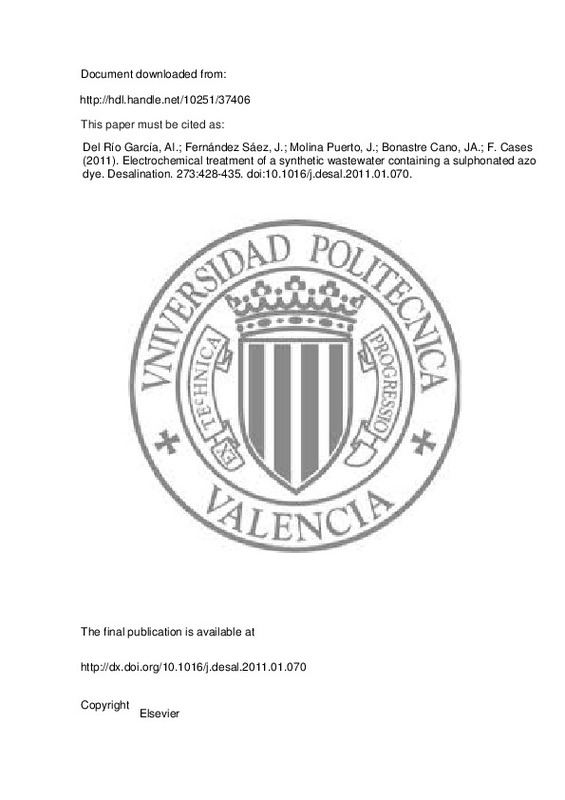JavaScript is disabled for your browser. Some features of this site may not work without it.
Buscar en RiuNet
Listar
Mi cuenta
Estadísticas
Ayuda RiuNet
Admin. UPV
Reducing sulfates concentration in the tannery effluent by applying pollution prevention techniques and nanofiltration
Mostrar el registro completo del ítem
Galiana Aleixandre, MV.; Mendoza Roca, JA.; Bes-Piá, M. (2011). Reducing sulfates concentration in the tannery effluent by applying pollution prevention techniques and nanofiltration. Journal of Cleaner Production. 19(1):91-98. doi:10.1016/j.jclepro.2010.09.006
Por favor, use este identificador para citar o enlazar este ítem: http://hdl.handle.net/10251/103490
Ficheros en el ítem
Metadatos del ítem
| Título: | Reducing sulfates concentration in the tannery effluent by applying pollution prevention techniques and nanofiltration | |
| Autor: | Galiana Aleixandre, María Vicenta | |
| Entidad UPV: |
|
|
| Fecha difusión: |
|
|
| Resumen: |
[EN] The use of large quantities of sulfuric acid and other sulfur-containing chemicals causes high sulfate concentrations in the wastewater of a tannery. The aim of this work was reducing the sulfate concentration in the ...[+]
|
|
| Palabras clave: |
|
|
| Derechos de uso: | Cerrado | |
| Fuente: |
|
|
| DOI: |
|
|
| Editorial: |
|
|
| Versión del editor: | http://doi.org/10.1016/j.jclepro.2010.09.006 | |
| Tipo: |
|






![[Cerrado]](/themes/UPV/images/candado.png)



